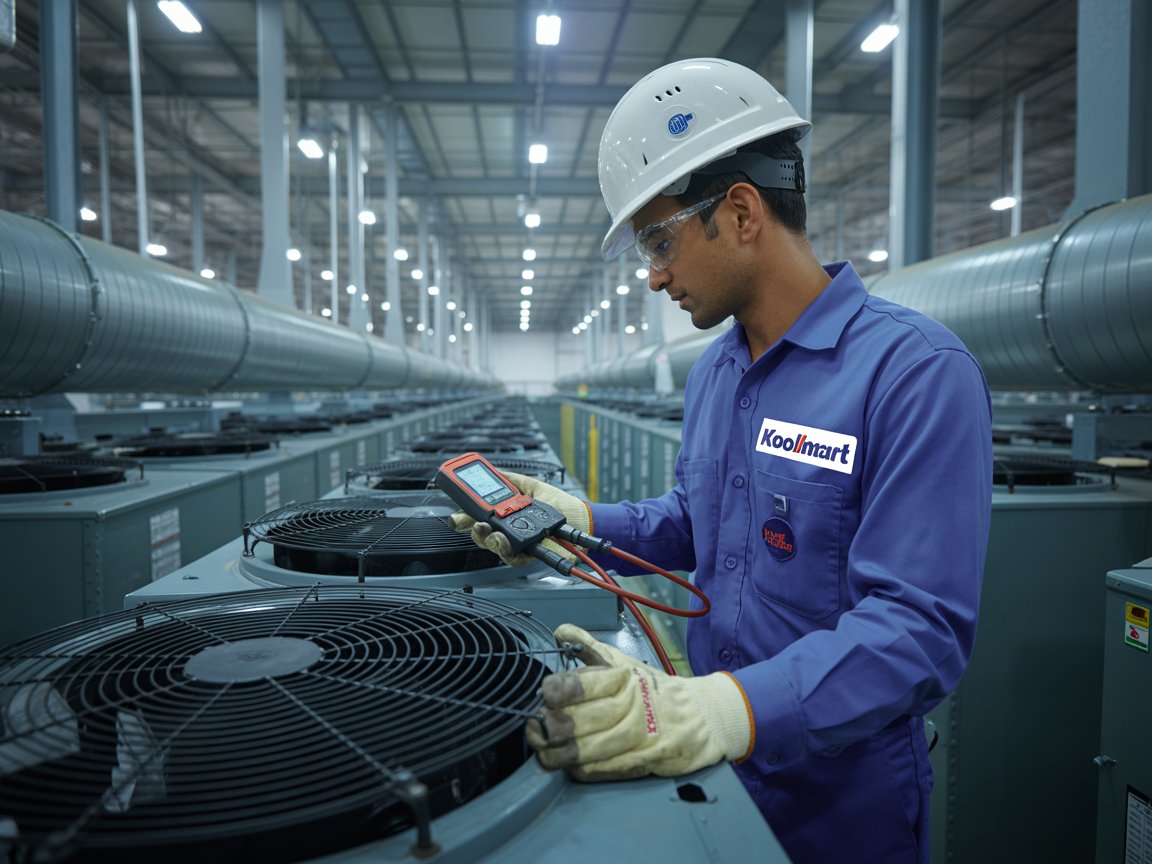Industrial HVAC Systems
Industrial HVAC Systems

Industrial HVAC (Heating, Ventilation, and Air Conditioning) systems are essential components in large-scale commercial and manufacturing facilities. These systems go beyond basic climate control—ensuring optimal working conditions, maintaining indoor air quality, and supporting production processes that depend on precise temperature and humidity levels.
In this guide, we’ll explore what industrial HVAC systems are, how they work, the types available, key components, common applications, and the benefits of proper HVAC system design and maintenance.
What is an Industrial HVAC System?
An industrial HVAC system is a complex mechanical setup designed to regulate the environment within large buildings or facilities. Unlike residential or standard commercial systems, industrial HVAC systems must accommodate larger spaces, varying environmental needs, and specialized equipment or processes.
These systems control temperature, humidity, air flow, and air purity to meet the needs of both human occupants and industrial operations. In industries like pharmaceuticals, food processing, and electronics manufacturing, even minor deviations in climate control can result in costly errors or non-compliance with regulations.
Key Components of an Industrial HVAC System
- 1. Heating Units: Boilers or electric heaters to raise indoor temperature and protect equipment in cold conditions.
- 2. Cooling Units: Chillers or large-scale ACs designed to handle constant, high-volume cooling loads.
- 3. Ventilation Systems: Includes fans, ducts, and AHUs to circulate fresh air and remove contaminants.
- 4. Ductwork: Extensive networks for distributing air across vast spaces; must be durable and well-insulated.
- 5. Controls and Automation: BMS/DDC systems manage energy efficiency and performance using smart data inputs.
- 6. Air Filtration and Purification: HEPA filters, UV sterilizers, and electrostatic filters used in clean-critical industries.
Types of Industrial HVAC Systems
- 1. Split Systems: Suitable for smaller areas; indoor and outdoor units work separately.
- 2. Packaged Systems: All-in-one rooftop units for mid-size facilities with space-saving benefits.
- 3. Chiller-Based Systems: Use chilled water for large-area cooling; ideal for factories and data centers.
- 4. VRF/VRV Systems: Energy-efficient zoning for buildings with diverse temperature needs.
- 5. Make-Up Air Units (MAUs): Replace exhausted air with conditioned outdoor air to maintain balance and air quality.
Applications of Industrial HVAC Systems
- Manufacturing: Manages heat and airflow for operational machinery and personnel comfort.
- Pharmaceuticals: Maintains sterile, climate-controlled environments.
- Food Processing: Ensures hygiene, preservation, and compliance with food safety standards.
- Data Centers: Controls temperature to protect servers and IT infrastructure.
- Warehouses: Maintains ambient temperature and humidity for stored goods.
- Chemical Plants: Ensures proper ventilation and prevents build-up of toxic gases.
Benefits of an Efficient Industrial HVAC System
- 1. Energy Efficiency: Smart controls and automation lower energy usage and costs.
- 2. Product Quality: Precise climate conditions maintain consistency in sensitive processes.
- 3. Worker Comfort and Safety: Healthy environments increase morale and safety compliance.
- 4. Regulatory Compliance: Supports compliance with industrial and environmental regulations.
- 5. Equipment Longevity: Reduces wear and tear, extending life of machines and systems.
Maintenance and Challenges
Industrial HVAC systems require regular maintenance due to their scale and complexity. Typical challenges include:
- High energy consumption
- Component wear and mechanical breakdowns
- Duct leaks or blockages
- Clogged air filters reducing efficiency
- Sensor misalignment and control issues
Regular inspections, part replacements, and performance checks help mitigate these risks and improve system lifespan.
Future Trends in Industrial HVAC
- IoT Integration: Smart sensors enabling predictive diagnostics and maintenance.
- AI-Driven Controls: Self-optimizing systems that react to real-time building conditions.
- Green HVAC: Integration of solar and renewable sources to reduce carbon footprint.
- Advanced Filtration: HEPA + UV solutions for post-pandemic indoor air quality focus.
- Heat Recovery: Repurposing waste heat for cost and energy savings.
Industrial HVAC systems are critical to the success of large-scale operations. Whether it's maintaining product integrity, ensuring worker comfort, or meeting regulatory standards, a well-designed and efficiently operated HVAC system is an invaluable asset.
With ongoing technological advancements and a focus on sustainability, industrial HVAC systems are becoming smarter, more efficient, and more vital than ever.
